In the circuit shown the cell is idea with end =15V each resistance is of 3Ω The potential difference the capacitor is
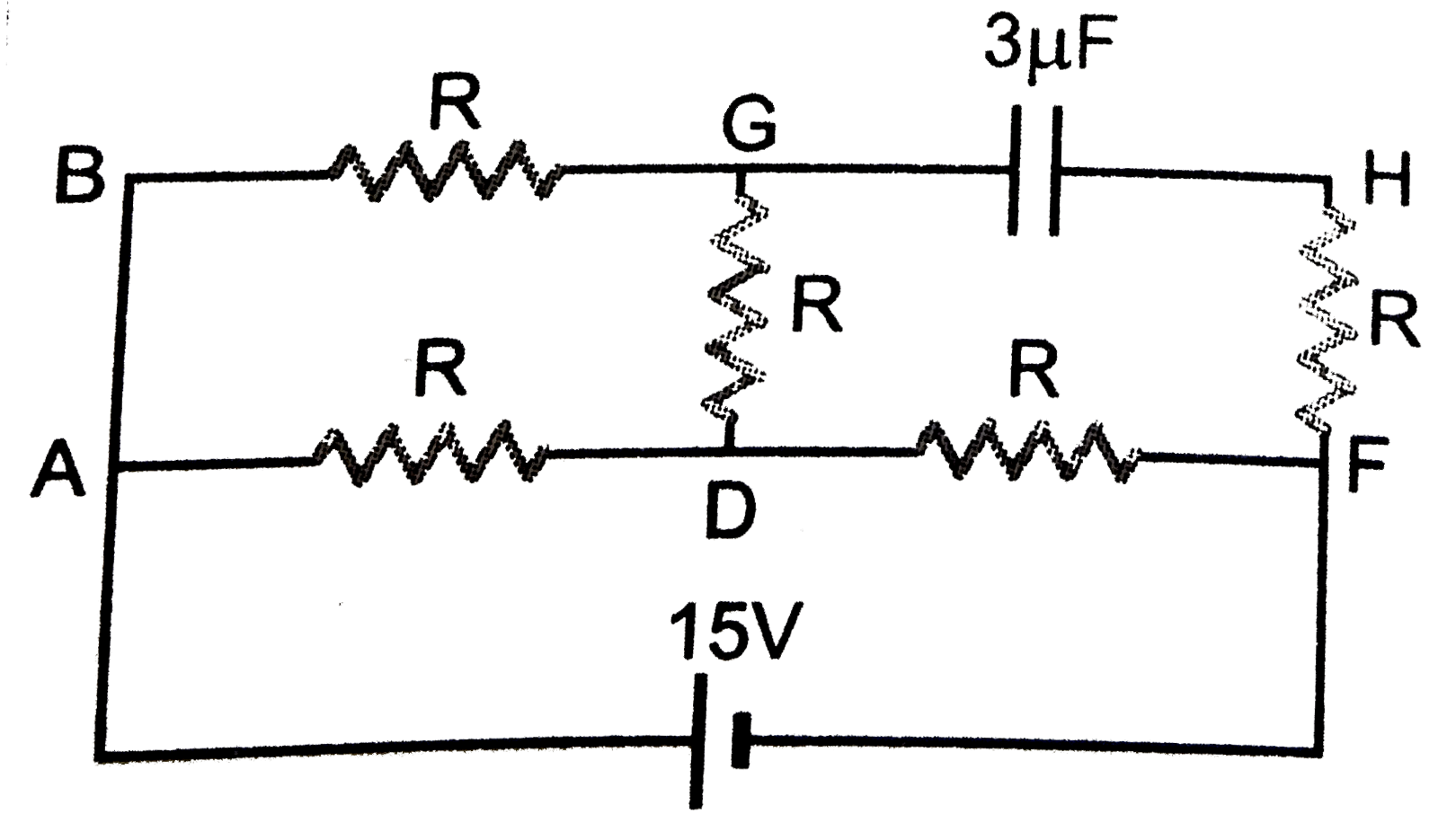
zero
9V
12V
15V
The correct Answer is:C
Since fully charged capacitor draws no currents .Therefore, no current flows in arm GHF so the resistance R of arm BF ineffective .The total resistance of other resistance in circuit is
R'=(R+R)×R(R+R)+R+R=6×36+3+3=5Ω
Total current, I=ER'=155=3A
Since in parrelel circuit the current divides in the inverse ratio of resistance so current in arm ABGD So pot diff between G and D
=VG−VD=1×3=3V
Pot diff between D and F
=VD−VF=3×3=9V
∴VG−VF(VG−VD)+(VD−VF)
=3+9=12V
Pot diff across capacitior =VG−VF=12V
Topper's Solved these Questions
- CURRENT ELECTRICITYBOOK - PRADEEPCHAPTER - CURRENT ELECTRICITYEXERCISE - Jee (main and advance)
4 Videos
- CURRENT ELECTRICITYBOOK - PRADEEPCHAPTER - CURRENT ELECTRICITYEXERCISE - Interger Type
2 Videos
- CURRENT ELECTRICITYBOOK - PRADEEPCHAPTER - CURRENT ELECTRICITYEXERCISE - Value based
2 Videos
- COMMUNICATION SYSTEMSBOOK - PRADEEPCHAPTER - COMMUNICATION SYSTEMSEXERCISE - MODEL TEST PAPER-2
9 Videos
- DUAL NATURE OF RADIATION AND MATTERBOOK - PRADEEPCHAPTER - DUAL NATURE OF RADIATION AND MATTEREXERCISE - Exercise
191 Videos
Similar Questions
An ideal cell of emf 10 V is connected in circuit shown in figure. Each resistance is 2Ω . The potential difference (in V) across the capacitor when it is fully charged is _______.
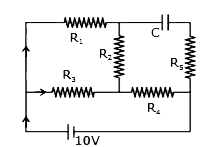
View SolutionIn the circuit shown below the cell is ideal, with emf = 2 V: The resistance of the coil of the galvanometer G is 1Ω. Then, find the potential difference across C1 (in volts), in steady state
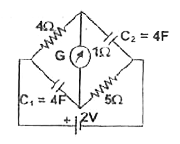
View Solution
Knowledge Check
In the circuit shown in fig. the cell is ideal with emf 15V. Each resistance is of 3Ω. The potential difference across the capacitoro in steady state is
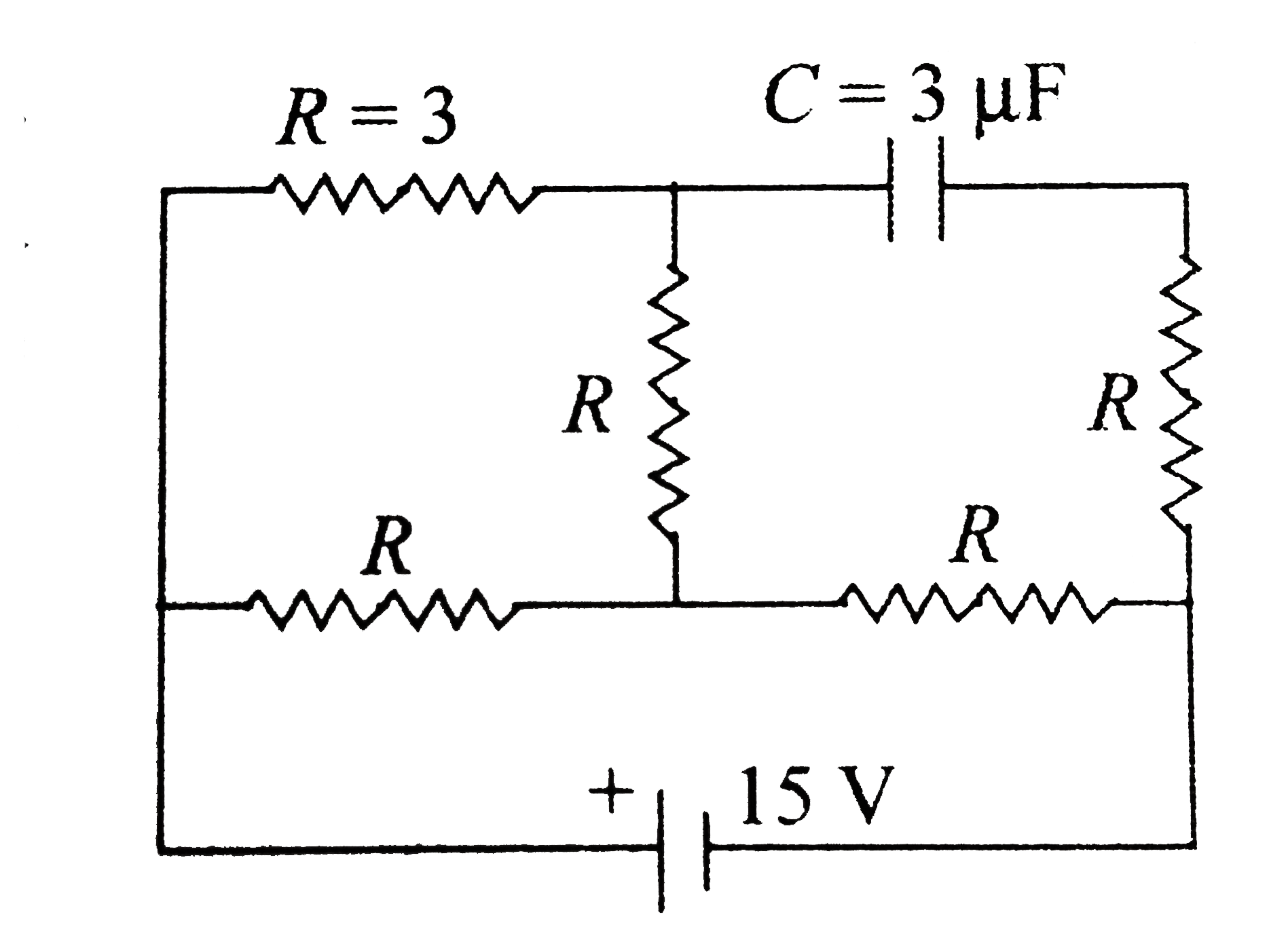 A0B9 VC12 VD15 V
A0B9 VC12 VD15 VIn the circuit shown, the cell is ideal , with emf=15V. Ecah resistance is of 3Ω. the potential difference across the capacitor is
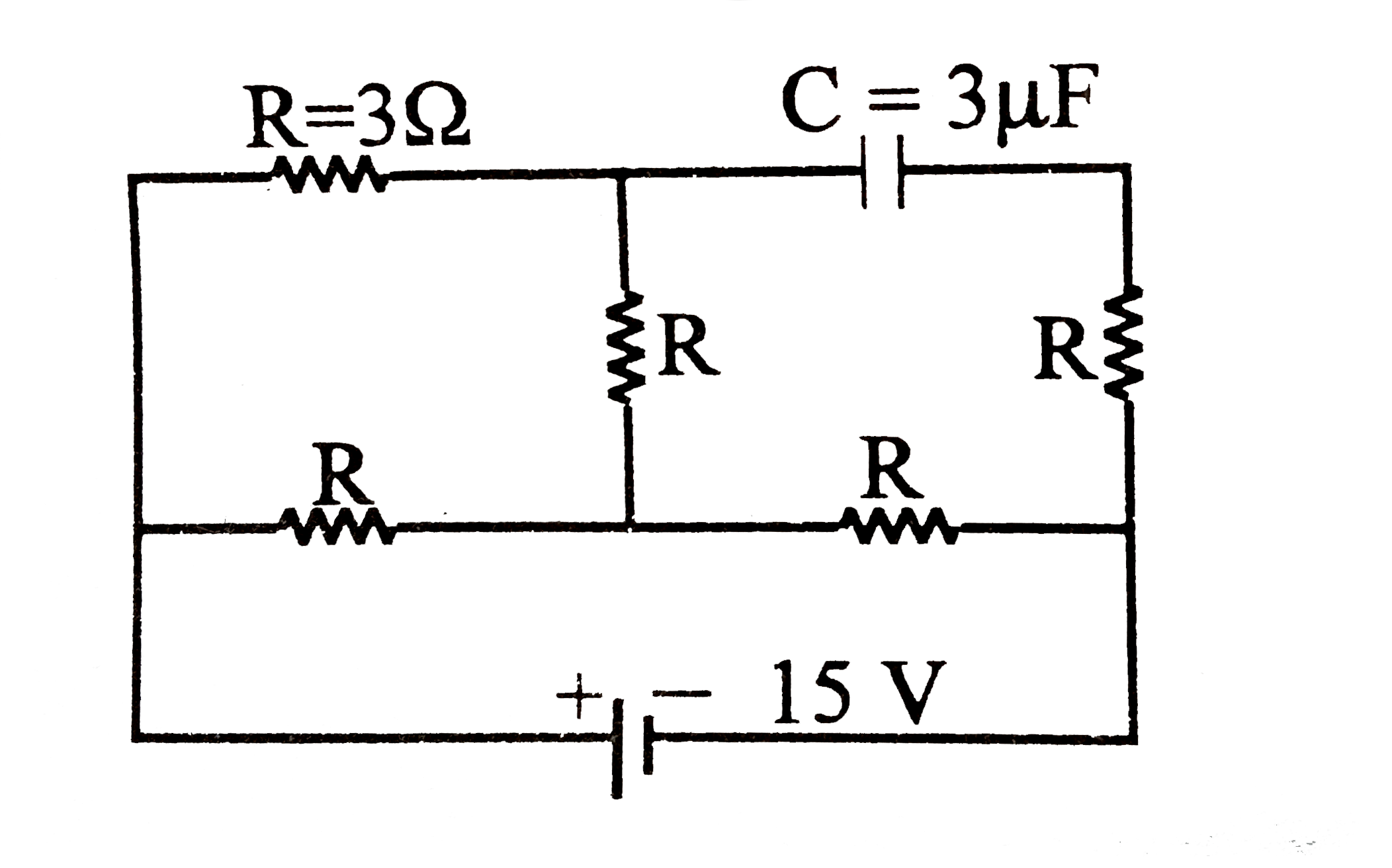 AzeroB9VC12VD15V
AzeroB9VC12VD15VIn the circuit shown, the cell is ideal with emf = 2V . The resistance of the coil of the galvanometer G is 1Ω.

(i) No current flows in G
(ii) 0.2A current flows in G
(iii) potential difference across C1is1V
(iv) Potential difference across C2 is 1.2VA(i),(iii)B(i),(ii),(iv)C(ii),(iii),(iv)D(i),(ii),(iv)
In the shown circuit the following battery is of emf 4V and internal resistance 8Ω. Find the potential difference between points x and y as shown in the circuit.

View SolutionThe emf of a cell is 2 V. When the terminals of the cell is connected to a resistance 4Ω. The potential difference across the terminals, if internal resistance of cell is 1Ω is
View SolutionIn the circuit shown, the current in 3Ω resistance is
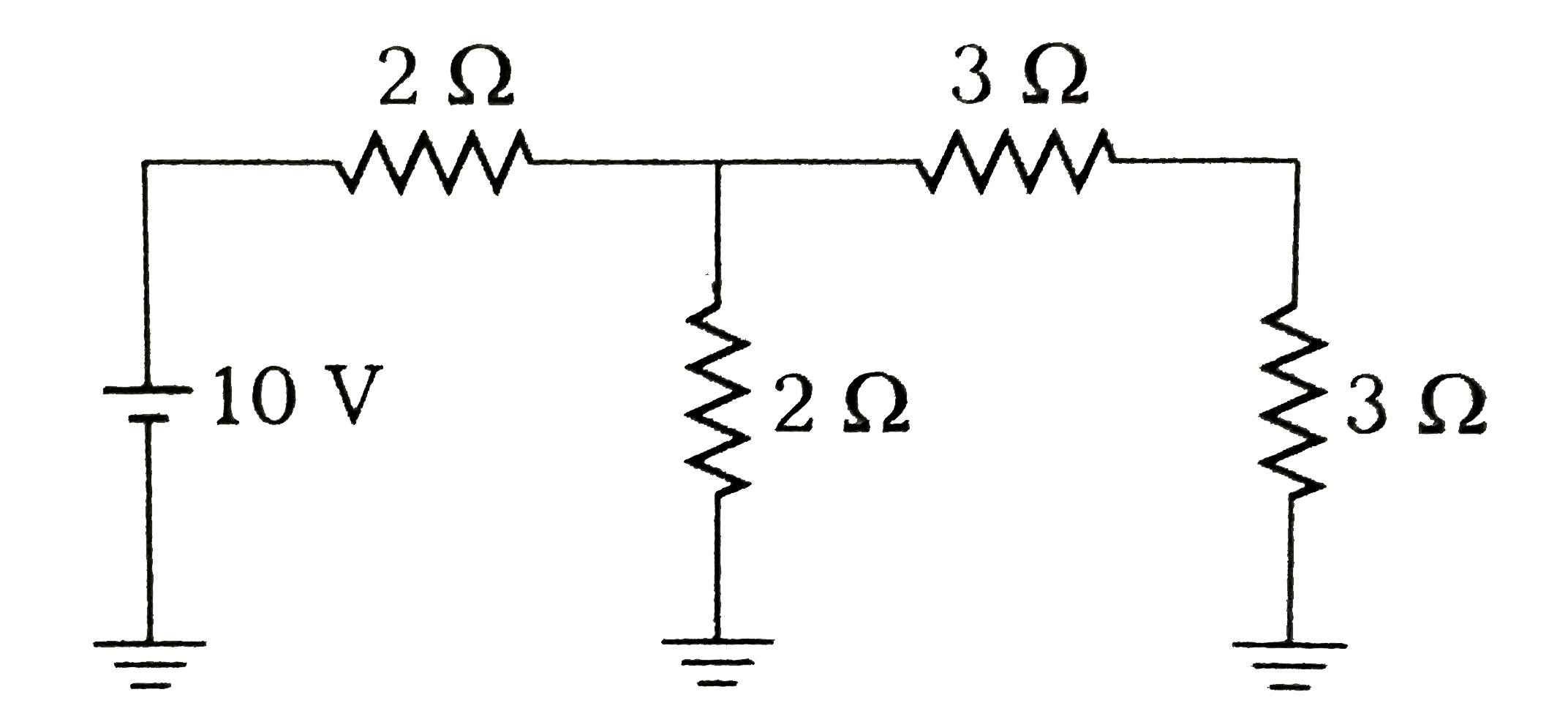
View SolutionTwo cells e1ande2 connected in opposition to each other as shown in figure. The cell of emf 9 V and internal resistance 3Ω the cell is of emf 7V and internal resistance 7Ω. The potential difference between the points A and B is
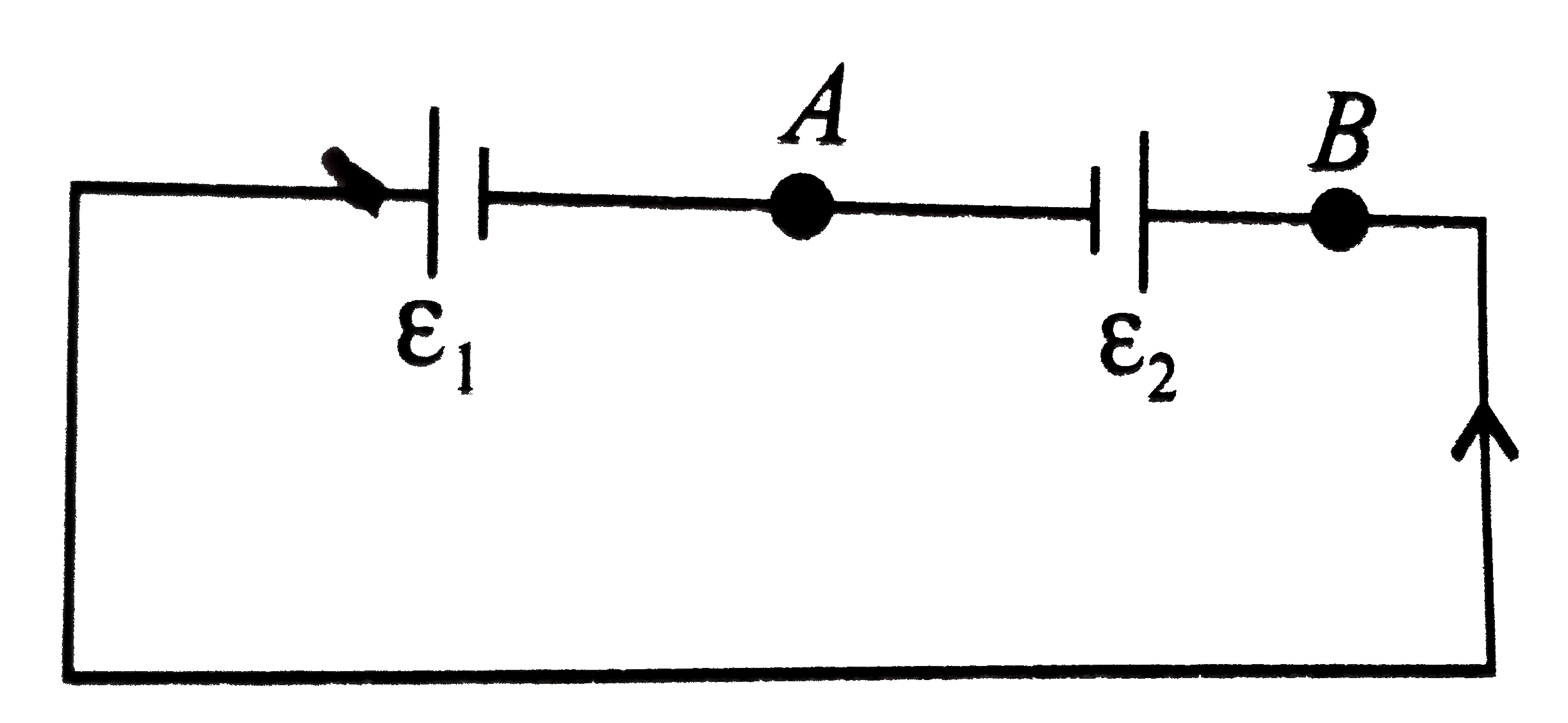
View SolutionA capacitor of capacitance 1μF is connected in parallel with a resistance 10Ω and the combination is connected across the terminals of a battery of EMF 50 V and internal resistance 1Ω. The potential difference across the capacitor at steady state is (in Volt)
View Solution
